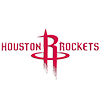Following up on my last column about potential closer stashes, I want to look at one of the other big dilemmas likely to be facing keeper-league GMs in the offseason: what to do with a young player coming off a disappointing campaign. While we all marvel at the exploits of Ronald Acuna and Juan Soto in the NL East, and the Yankees' dynamic duo of Gleyber Torres and Miguel Andujar, there are lots of other players enduring much tougher introductions to the majors, or suffering through sophomore slumps, whose dynasty or keeper status is a lot more uncertain heading into 2019.
Generally speaking, this is something you only need to worry about in shallower formats, or leagues with limited keeper spots. In deep NL and AL-only or dynasty leagues, you're usually protecting a dozen or more players, so there's plenty of room for underachievers with upside. In something like a 15-team mixed format, however, the baseline for what counts as "useful" from a roster spot is a lot higher, and a player who can't meet it – or one who barely clears that bar – may not be worth keeping over an established veteran with a similar salary who has a higher floor but lower ceiling.
Here's a look at some of the youngsters who haven't lived up to expectations this season, and their chances of being worth keeping when you freeze your roster next spring. I'll give each player one of three recommendations: HOLD, which means they
Following up on my last column about potential closer stashes, I want to look at one of the other big dilemmas likely to be facing keeper-league GMs in the offseason: what to do with a young player coming off a disappointing campaign. While we all marvel at the exploits of Ronald Acuna and Juan Soto in the NL East, and the Yankees' dynamic duo of Gleyber Torres and Miguel Andujar, there are lots of other players enduring much tougher introductions to the majors, or suffering through sophomore slumps, whose dynasty or keeper status is a lot more uncertain heading into 2019.
Generally speaking, this is something you only need to worry about in shallower formats, or leagues with limited keeper spots. In deep NL and AL-only or dynasty leagues, you're usually protecting a dozen or more players, so there's plenty of room for underachievers with upside. In something like a 15-team mixed format, however, the baseline for what counts as "useful" from a roster spot is a lot higher, and a player who can't meet it – or one who barely clears that bar – may not be worth keeping over an established veteran with a similar salary who has a higher floor but lower ceiling.
Here's a look at some of the youngsters who haven't lived up to expectations this season, and their chances of being worth keeping when you freeze your roster next spring. I'll give each player one of three recommendations: HOLD, which means they should in almost every circumstance be protected in 2019; BUBBLE, which means whether they land on your winter or spring protected list depends on your other options and league setup; and DROP, which means they probably aren't worth a spot.
Luis Castillo, Reds: On the heels of a dominant 15-start debut in 2017, Castillo was pencilled in as Cincy's ace of the present and the future. He hasn't come close to living up to that billing, though, posting a 5.07 ERA through 136.2 innings. While an elevated 1.6 HR/9 has been one of the main culprits, Castillo's raw stuff also hasn't been quite as explosive – his K/9 has fallen below the magic 9.0 mark, and he's lost almost two full ticks off his average fastball velocity from last year, as it's dropped to 95.6 mph. He's still flashing his upside, though, most recently blanking the Phillies over seven frames with nine K's on July 29. His main problem this year has been his command within the zone. After adding a slider and sinker to his arsenal last season (the pitches that seemingly turned him into a stud prospect overnight) he's has issues locating those pitches where he needs to, which has led to unfavorable counts and pitches left over the fat part of the plate, and that's snowballed into some confidence issues during the season. Recommendation: HOLD HOLD HOLD. Luis Severino has a 5.83 ERA in 2016, and he turned out OK. Castillo still has that kind of potential if (when?) he finds a better feel for his pitches, and it's highly unlikely you'll find anyone in his price range with his ceiling, or get him back any cheaper if you toss him back into the player pool. Regardless of how he performs in September, he should be locked into your 2019 keeper list.
Jake Faria, Rays: Faria has a solid 14-start debut last season, but a late-May oblique strain effectively ruined his summer. His numbers in 57.2 innings with Tampa haven't been great, but it's a small sample, and he should be back up with the big club when rosters expand Saturday with a chance to improve on his 4.84 ERA, either as a starter or in one of the Rays' regular long-relief roles riding shotgun for an opener. Recommendation: BUBBLE. The 25-year-old doesn't have ace-level upside, but there's no reason to think injuries will be an issue for him again in 2019, and he should have a rotation (or "rotation", depending on what the team does with its pitching staff next year) spot sewed up alongside Tyler Glasnow, Blake Snell and a returning Brent Honeywell. With 160-plus innings on a team that should be at least semi-competitive, Faria could deliver 150 strikeouts and double-digit wins with solid ratios, numbers that would be at home on almost any fantasy squad.
Lucas Giolito / Reynaldo Lopez, White Sox: I'm listing these two together because their issues are pretty much the same. Both Lopez and Giolito came over from the Nats with a lot of hoopla and helium as potential aces, or at least No. 2/3 SPs, but both have struggled in 2018 to put away hitters and keep their ratios in check. Lopez at least started the season on fire before regressing – his ERA was under 3.00 as late as May 25 before it started sliding to its current 4.66 mark – while Giolito hasn't had an ERA below 5.00 since his first outing of the year. Both righties also feature K/9 rates firmly in the mid-sixes, a number which would leave them stuck as back-end starters or even bullpen arms down the road if they can't regain their minor-league dominance. Recommendation: DROP for both. Of the two, Lopez has a clearer path to shallow-league value, as his average fastball this season has been a robust 95.5 mph. He just needs to find an offspeed pitch he can put guys away with to begin to reach his potential, but if you want to take that gamble he can probably be picked up at a bargain salary in the endgame of your auction next spring. Giolito, on the other hand, is a shadow of the player who was drafted in the first round in 2012, or even the guy who returned from Tommy John surgery and tore through Low-A as a 19-year-old in 2014. He's averaged 92.4 mph with his fastball this year, and barring something dramatic happening, a leap to fantasy relevance seems unlikely.
Scott Kingery, Phillies: When the Phillies signed him to a long-term deal just before the season began, it pumped a lot of helium into the young infielder's perceived value. The 24-year-old deflated that balloon pretty quickly, though, and he currently sits with a .229/.271/.341 slash line through his first 121 big-league games. Kingery's spent the season essentially being the intern for the team's starting lineup, playing primarily at shortstop but seeing time at second base, third base and all three outfield spots. There's been no second-half surge for him, either. In 30 games since the All-Star break, he's managed a paltry .580 OPS. Recommendation: BUBBLE. Kingery might seem like an obvious drop, but there are solid reasons to consider him as a keeper. His shortstop eligibility means he doesn't need to produce numbers quite as high as he would at another position to be useful, and with seven homers and 10 steals already he could finish 2018 with double digits in each category. In leagues that use a 10-game threshold for qualification instead of 20, he'll have some versatility as well, qualifying at 3B already and potentially adding OF to his resume (he's played seven games between the three spots). More importantly, a starting job could be waiting for him next spring. J.P. Crawford had an even more disappointing 2018 than he did, and Maikel Franco will be due for a big raise in arbitration. Especially if Franco gets dealt, Kingery figures to be one of the Phillies' starters on the left side of the infield in 2019, and with consistent playing time could come much more consistent production.
Trey Mancini, Orioles: Prior to 2017, Mancini was considered a decent prospect, but his 24-HR rookie campaign made it seem like he might be a future cornerstone for the O's. While he's posted fairly similar power numbers, slugging 19 homers through 126 games so far this year, a .239 batting average has sunk his fantasy value in most formats, as quite frankly 20-HR power is basically the bare minimum at 1B/OF these days if you're not bringing speed or a high BA to the table. Recommendation: BUBBLE. I very nearly made Mancini a 'Drop', but a moderate uptick in his walk rate (5.6 percent last season, 7.8 percent this season) suggests he is making adjustments at the plate, even if they haven't paid real dividends yet, and that potentially makes him worth hanging onto. The shallower the league you're in, though, the more his 2018 output is going to make him look like a replacement-level bat, and the easier it will be to grab him for a song in the auction endgame.
Ryan McMahon, Rockies: McMahon has essentially been a victim of the Rockies' unfamiliarity with the concept of a sunk cost. While the 23-year-old hasn't exactly forced the issue, slashing .243/.326/.395 in 72 games with the big club and .290/.339/.531 in 55 games for Triple-A Albuquerque, that's no worse than Ian Desmond's .232/.302/.438 line. Desmond's making $22 million this year, though, and has another $38 million or more coming to him on a contract that runs through at least 2021, while McMahon, well, doesn't. Recommendation: HOLD. Desmond's contract gets a lot more movable this offseason, and even if sticks around in Denver, it's very easy to see him shift into a utility role while ceding first base to McMahon. DJ LeMahieu is also a free agent, although Garrett Hampson and Brendan Rodgers could have something to say about who the new starting second baseman is. McMahon's putting together a strong finish to 2018 even without consistent at-bats, slashing .298/.394/.491 in 25 games since his promotion in late July, and his upside while playing his home games in Coors Field is even higher than that.
Amed Rosario, Mets: Somewhat surprisingly, Rosario has been the rock in the Mets' infield this year as a rookie. While the other three positions have been close to revolving doors due to injuries, trades and general organizational chaos, the 22-year-old has played 117 of the team's 131 games at the six. His .244/.285/.367 has been predictably tepid, but his seven homers and 16 steals have given him some fantasy value. Recommendation: HOLD. The key for any improvement in Rosario's fantasy stock will likely come via his BABIP. His .296 BABIP this year looks solid, but he routinely posted marks of .340 or better dating back to Rookie ball, and some of his other numbers this year (including a 20.6 percent strikeout rate) are actually pretty good. As he matures and adds strength, his hard-hit rate should rise and boost his BABIP with it. In the meantime, his speed at least gives him a solid floor for value, and that combination of plausible ceiling and stable floor has definite keeper appeal.
Kyle Tucker, Astros: Tucker could head into 2019 as fantasy baseball's limbo king. No, I don't mean the dance/gym activity, I mean that his roster status will leave his fantasy value a complete mystery. The 21-year-old has nothing left to prove at Triple-A (.327/.387/.580 this year with 23 homers and 20 steals in 94 games) but hasn't yet clicked in the majors, and if he sees even semi-regular playing time in September – a distinct possibility with George Springer still banged up – he'll lose his rookie eligibility in most leagues and no longer be stashable in your minor-league system, if your league has that option. Recommendation: HOLD. This might be the toughest call of all the players I've looked at in this piece. Given that the Astros are firmly in win-now, World Series-or-bust mode, another season spent bouncing between the bench and Triple-A could easily be in the cards for Tucker in 2019, especially if the team shores up its outfield with a big signing or splashy trade over the winter. His five-category upside can't be ignored, though, and with Evan Gattis and Marwin Gonzalez both free agents, there should be a lot of available at-bats for someone in the pipeline. Unless the front office puts Bryce Harper in navy and orange, it's not hard to imagine Tucker out-playing anybody the team might import to compete with him.







































